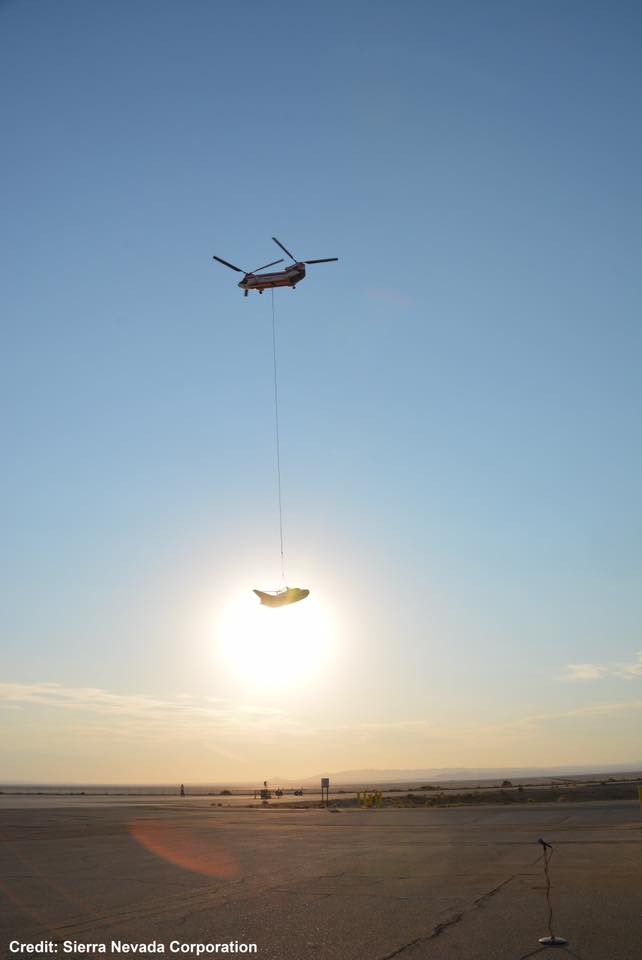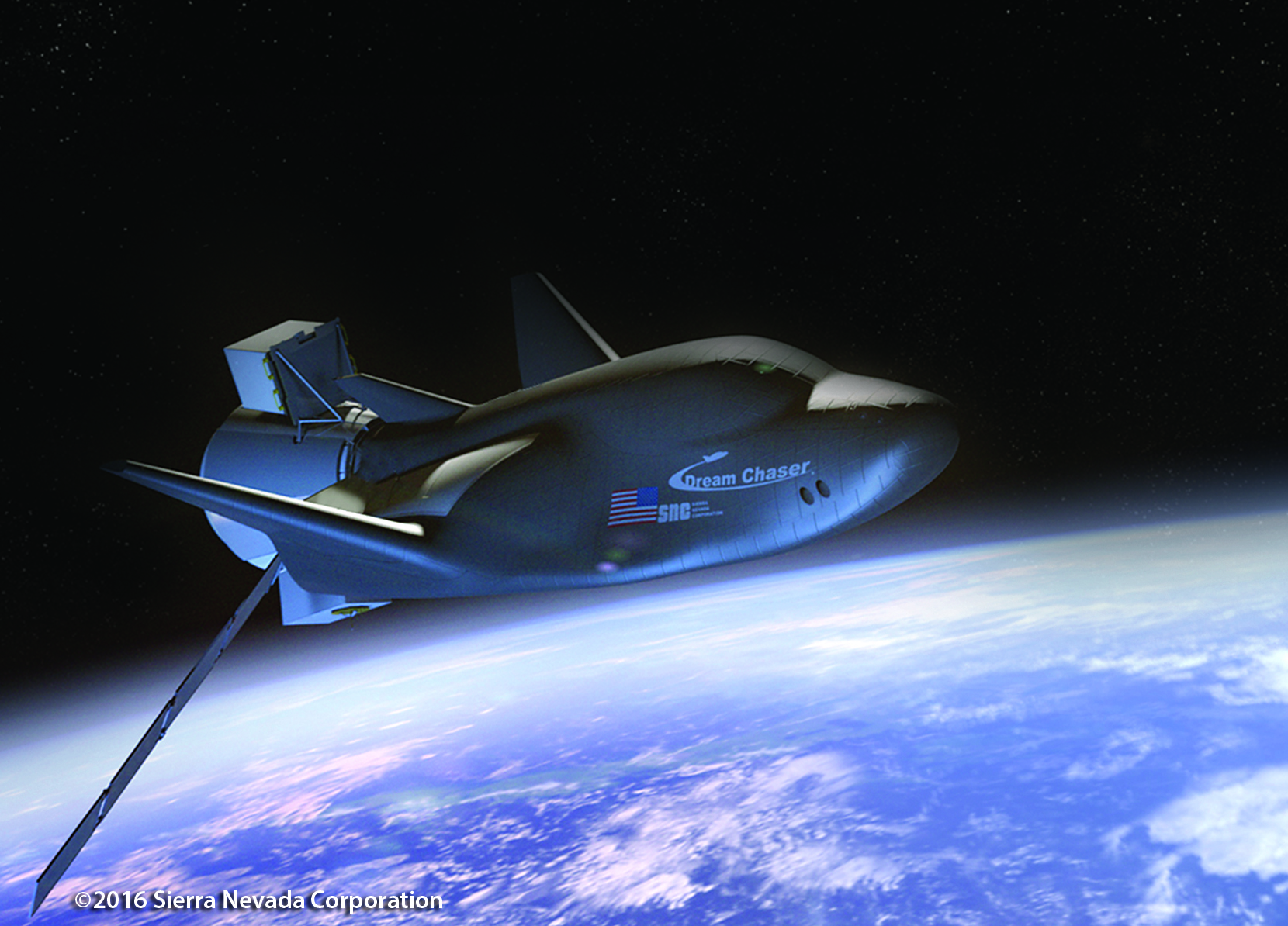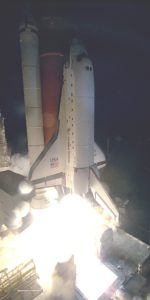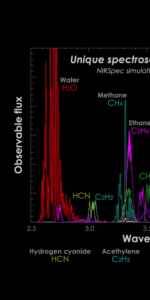
The engineering test article for Sierra Nevada Corporation’s Dream Chaser ‘spaceplane’ took to the skies today (Aug 30, 2017) over NASA’s Armstrong Flight Research Center, located at Edwards Air Force Base, CA, conducting a “Captive Carry” test while attached to a Columbia Helicopters Model 234-UT Chinook helicopter.
“We are very pleased with results from the Captive Carry test, and everything we have seen points to a successful test with useful data for the next round of testing,” said Lee “Bru” Archambault, SNC’s director of flight operations for the Dream Chaser program.
SNC holds a multi-billion dollar Commercial Resupply Services (CRS-2) program contract with NASA to resupply the International Space Station from 2019-2024, but a lot of work still needs to be done before it can make its inaugural launch atop a ULA Atlas-V rocket from Cape Canaveral, FL in two years.
Today’s test saw the Chinook carry Dream Chaser to the same altitude and flight conditions it will experience before being released on an upcoming Free Flight test, which is expected later this year (after a second Captive Carry test is conducted).
As outlined by SNC:
- These activities are being conducted through a Space Act Agreement with NASA’s Commercial Crew Program (CCP), although the Phase Two flight tests will also be highly supportive of, and executed in parallel with continued work being done by SNC under NASA’s Commercial Resupply Services 2 (CRS2) contract. The Dream Chaser test vehicle has been upgraded to include several components being integrated into the Dream Chaser Cargo System design, allowing Phase Two tests to act as a bridge between previous work with CCP and the next-generation vehicle currently under development for cargo resupply missions.
- The SNC Mission Control Center team sent commands to Dream Chaser, monitored performance and collected critical test data designed to allow the team to refine Dream Chaser systems for peak performance on the actual Free Flight test day.
- The Captive Carry test obtained data, evaluated systems such as radar altimeters, flush air data system, air data probes, navigation system, as well as overall system performance in a flight environment.
- Successful data analysis, flight crew and flight control team proficiency, are critical ingredients needed for Certification of Flight Readiness. All technical info from the Captive Carry flight tests will be evaluated by the SNC engineering team and shared with NASA counterparts.
“This test is another indication the Dream Chaser is on track for meeting our key milestones on the way to orbital spaceflight. We are excited to move through the remaining ground and flight testing to help inform our CRS2 orbital vehicle design and upcoming production,” said Steve Lindsey, vice president of Space Exploration Systems for SNC.
NASA contracted SNC to fly at least six missions with their Dream Chaser ‘mini shuttle’ under CRS-2, and the company will put in a bid for a crew version if NASA opens up more multi-billion dollar commercial crew contracts in the future (currently given to Boeing and SpaceX).

SNC put their test article through its first free flight Approach and Landing test, ALT-1, at Armstrong three years ago, and the test went about as good as SNC could have hoped for, until the command was given to deploy its landing gear. Only two of its three gear deployed, causing the vehicle to skid off the runway, sustaining minor structural damage.
The problem was traced to a mechanical issue with the specific landing gear, rather than something related to bad software (none of the primary systems that gave the commands that control the flight failed or had any problems).
SNC has made significant structural and systems improvements to the test article since, including the composite wings and aeroshells, and invested heavily in maturing the vehicle’s orbital avionics, guidance navigation and control, the flight software, and employed a number of new processes, all of which will be used on the orbital vehicle as well. The advanced orbital Thermal Protection System (TPS) was installed on the vehicle’s skid too, in order to do advanced testing of the actual orbital TPS.
Engineers hope to get everything they need out the Phase Two flight test campaign now underway, but will fly more to validate the aerodynamic properties, flight software, and control system performance of the spacecraft if needed.
The company hopes to launch their first operational Dream Chaser cargo mission to the ISS for NASA in the first half of 2019.
.
Be sure to “LIKE” AmericaSpace on Facebook and follow us on Instagram & Twitter!
.





